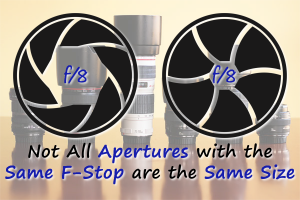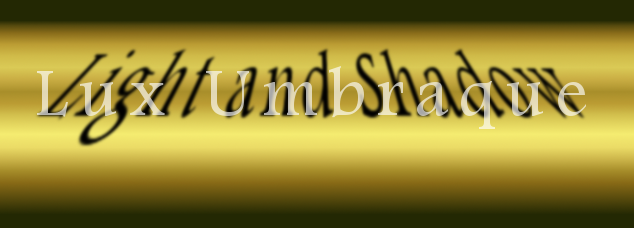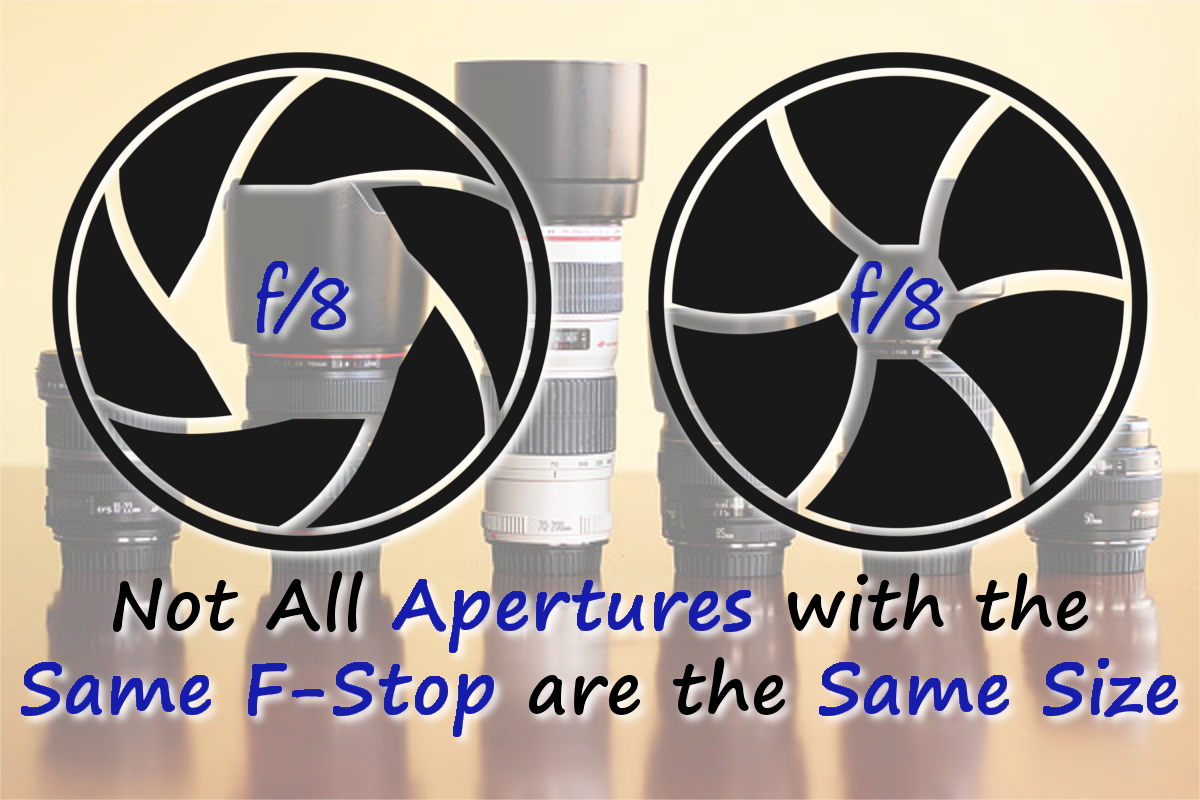
The f-stop is relative to the focal length of a lens. It’s the ratio of a lens’s focal length to the size of the aperture letting in light. So f/8 on a 50mm lens means the aperture is 50mm/8 or 6.25mm in diameter. But on a 100mm lens, that same f/8 aperture is 100mm/8 or 12.5mm in diameter.
Because the area of a circle quadruples as its diameter doubles, f/8 on a 100mm lens lets through four times as much light as f/8 on a 50mm lens.
But longer lenses let in less light to start with. That 100mm lens only lets in one quarter the light of a 50mm lens. A 400mm lens lets in only 1/64th the light of a 50mm, but its f/8 is 64 times bigger. And so on. In other words, the f-stop tells you how much total light is getting through.*
This is why the f-stop system is so useful. If f/16 and 125/sec at ISO 100 gives you a good exposure in sunlight with a 50mm lens, the same settings will give you a good exposure in sunlight with any other lens.
But there’s a big catch.
It has become common to refer to a lens’s “35mm equivalent” focal length, or, for convenience, just “equivalent” focal length. It’s become so common, in fact, that many manufacturers omit the word “equivalent.”
For instance, one common advertising bullet point for the Panasonic FZ1000 that I like so much is this: “Bright Leica DC Lens 25-400mm F2.8-4.0.” What they mean by “25-400mm” is that the lens has the equivalent reach of a 25-400mm lens. That is, if you take a photo with a 400mm lens attached to a 35mm full-frame sensor and a photo with the “400mm” lens on the FZ1000, you’ll zoom in just as much because you’ll get the same field of view.
But the lens on the FZ1000 actually has a much shorter focal length of 9.12-146mm. The only reason it gives the same reach as the 400mm lens is that the FZ1000’s sensor is about 2.7x smaller, essentially cropping the 146mm image to make it seem like a 400mm image.
And here’s the catch: The f/4 specification on the FZ1000 refers to the ratio between the diameter and the real focal length of the lens, not the equivalent focal length. So the f/4 at “400mm” on the FZ1000 is really f/4 at 146mm, with an aperture diameter of only 36.5mm and an area of about 1,000mm2. That’s four times smaller than the f/5.6 on my real 400mm lens!
An aperture with a diameter of 36.5mm on a 400mm lens is called f/11, not f/4 (because 400/36.5 = 11). So the FZ1000 at “400mm and f/4” only lets through the same amount of light as my 400mm at f/11.
If so — if the f/4 setting on the FZ1000 acts like f/11 — doesn’t that mean that everything will be underexposed? In other words, if we know that f/16 and 1/125sec at ISO 100 is the right exposure for a full-frame sensor, why doesn’t the same f/16 and 1/125sec at ISO 100 on the FZ1000 give an underexposed image, because its f/16 is more like f/43?
The answer is that ISO is also relative. ISO measures how much light is needed per unit of area. On one hand, this is useful, because it means that an exposure combination of f-stop, shutter speed, and ISO is valid for any size sensor. But on the other hand, it’s confusing. A 16MP image from a full-frame sensor at ISO 100 has captured much more light than a 16MP image from the FZ1000. (This is why smaller sensors tend to be noisier than larger sensors at the same ISO, and why larger sensors tend to do better in dark settings.)
In summary, f-stops are convenient for determining exposure, but if you really want to understand what’s happening optically, you also need to know the real size of your aperture, and for that f-stop alone isn’t enough.





4 thoughts on “Not All Apertures with the Same F-Stop are the Same Size”
The physics discussed in the article are not accurate in this article, if the image projected on the sensor was the same size, this though process might hold water, but in this case if the sensor is smaller the projected image is also, so the amount of light falling on the sensor will be more concentrated and thus more light per unit will not be this dreamed preformance of a f/11 lens… the reason a croped sensor looks worse, is because you can only get so many imaging sensor sites in an prescribed area… At a given time you can only get so many sensors sites on a chip…If your imaging chip is 1/3 the size then you can only get 1/3 the resolution…unless you are Fuji and we all know how that went..
Tom,
Thanks for weighing in.
You are right that the light is more concentrated, but there is less light to begin with: The f/4 setting on the FZ1000 at 400mm is 36.5mm in diameter. The f/4 setting on my Canon 100-400mm lens at 400mm is 100mm in diameter. No matter how you look at it, an opening with a diameter of 100mm lets in more light — much more light — than one with a 36.5mm diameter. There’s no way around that.
With less light more tightly focused, you end up with exactly the same amount of light per unit of area, but you still have less overall light, and that degrades the image. (As it happens, f/4 at 400mm equiv. on the FZ1000 also gives you the same depth of field as f/11 at 400mm on a full-frame sensor. I’ll turn to that another time.)
Hi – I have a Minolta MC Rokker PF 1:1.4 f=58mm lens (1969 vintage – my dad’s old SRT101 camera which I want to us reversed in macro-photography) which had had fungus internally removed to free a sticking iris; is it possible to reset the aperture size for (say f16) by calculating the diameter of the opening as indicated in your calculations and then physically setting this diameter (at f16) to the calculated opening diameter? Someone (???) had obviously been into this lens, disassembled it but without leaving any witness marks on the internal lens body for the diaphragm setting before pulling it apart – and the actual diameter opening at f16 looks too big in diameter? Appreciate your help and comments please. Cheers from Down Under
Wow. I just saw this. So sorry for the delay!
Yes, you can manually calculate the size. F/16 on your 58mm lens is 3.6mm in diameter.